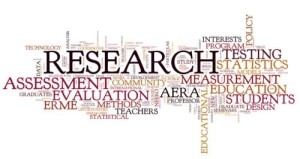 If you are interested in reviewing some professional research articles regarding Neurofeedback below are some links to some articles as well as some links to other sites that are helpful for researching Neurofeedback.
If you are interested in reviewing some professional research articles regarding Neurofeedback below are some links to some articles as well as some links to other sites that are helpful for researching Neurofeedback.
A good starting point is to read: What is Neurofeedback?
A recent Position Paper by the ISNR published in the Journal of Neurotherapy (July, 2010) : “provides the current evidence supporting the use of neurofeedback in the treatment of ADHD and recommendations on the implementation of neurofeedback in clinical practice.” (p. 66) Read Position Paper
- A very COMPREHENSIVE BIBLIOGRAPHY which has links to research about many disorders is available through the International Society for Neurofeedback and Research.
Some preferred Neurofeedback related websites:
~International Society for Neurofeedback and Research (ISNR)
~Biofeedback Certification International Alliance (BCIA)
~The Association for Applied Psychophysiology and Biofeedback (AAPB)
- A Meta-Analysis of The Efficacy of Neurofeedback in ADHD in the Journal of Clinical EEG and Neuroscience (July 2009) noted:
“… we conclude that neurofeedback treatment for
ADHD can be considered “Efficacious and Specific (level 5) with a high effect size for inattention and impulsivity and a medium effect size for hyperactivity.” Read Clinical Research and Neuroscience.
Peer-Reviewed References for Z-Score Neurofeedback:
Collura, T. F., Guan, J., Tarrant, J., Bailey, J., & Starr, F. (2010). EEG biofeedback case studies using live Z-score training and a normative database. Journal of Neurotherapy, 14(1), 22-46.
Collura, T. F. (2009). Neuronal dynamics in relation to normative electroencephalography assessment and training. Biofeedback, 36, 134-139.
Hallman, D. W. (2012). 19-Channel neurofeedback in an adolescent with FASD. Journal of Neurotherapy, 16(2), 150-154.
Hammer, B., Colbert, A., Brown, K., & Ilioi, E. (2011). Neurofeedback for insomnia: A pilot study of z-score SMR and individualized protocols. Applied Psychophysiology and Biofeedback, 36(4), 251-64.
Koberda, J. L., Moses, A., Koberda, L., & Koberda, P. (2012b). Cognitive enhancement using 19-electrode z-score neurofeedback. Journal of Neurotherapy, 16(3), 224-230.
Thatcher, R. W. (2013). Latest developments in live z-score training: Symptom check list, phase reset, and LORETA z-score biofeedback. Journal of Neurotherapy, 17(1), 69-87.
Wigton, N. L. (2013). Clinical perspectives of 19-channel z-score neurofeedback: Benefits and limitations. Journal of Neurotherapy, 17(4), 259-264.
Other References for Z-Score Neurofeedback:
Collura, T. F. (2008b, July). Whole-head normalization using live Z-scores for connectivity training (Part 2). NeuroConnections Newsletter, 9-12.
Collura, T. F. (2008). Whole-head normalization using live Z-scores for connectivity training, Part 1. NeuroConnections Newsletter, April 2008, 12, 15, 18-19. San Rafael, California; ISNR
Collura, T. F., Thatcher, R. W., Smith, M. L., Lambos, W. A., & Stark, C. R. (2009). EEG Biofeedback training using live z-scores and a normative database. In T. H. Budzynski, H. K. Budzynski, J. R. Evans & A. Abarbanel (Eds.), Introduction to quantitative EEG and neurofeedback: Advanced theory and applications (2nd ed., pp. 29-59). Burlington, MA: Elsevier.
Koberda, J. L., Moses, A., Koberda, P., & Koberda, L. (2012a, September). Comparison of the effectiveness of z-score surface/LORETA 19-electrodes neurofeedback to standard 1-electrode neurofeedback. Oral Presentation at the 20th Annual Conference of the International Society for Neurofeedback and Research, Orlando, FL.
Smith, M. (2008). A father finds a solution: Z-score training. NeuroConnections Newsletter, April 2008, 22, 24-25. San Rafael, California; ISNR
Thatcher, R. W. (2008). Z-score EEG biofeedback: Conceptual foundations. NeuroConnections Newsletter, April 2008, 9, 11, 20. San Rafael, California; ISNR
Wigton, N. L., & Krigbaum, G. (2012, September). Insights gained from over 3 years of 19-channel z-score neurofeedback: Towards new paradigms. Poster presented at the 20th annual International Society for Neurofeedback & Research Conference, Orlando, FL.
Wigton, N. L. (2010, September). Laplacian Z-Score Neurofeedback: A Unique Option in the Realm of Multi-Channel Z-Score Neurofeedback. Plenary session oral presentation at the 18th Annual International Society for Neurofeedback and Research, Denver, Colorado.
Wigton, N. L. (2010, September). Case studies overview of multi-channel z-score neurofeedback. Poster presented at the 18th annual International Society for Neurofeedback and Research Conference, Denver, CO.
Wigton, N. L. (2009). First Impressions of NeuroGuide Real-Time Z-Score Training. In J. Demos (Ed.), Getting Started with Dynamic Z-Score Training (pp. 81-89). Vermont: Neurofeedback of S.VT LLC.
Wigton, N. L. (2008, September). Does Z-Score NF work better than non Z-Score NF? Poster Session presented at the 16th Annual International Society for Neurofeedback and Research Conference, San Antonio, Texas.
References for Neurofeedback for Migraines:
Carmen, J. (2004). Passive Infrared Hemoencephalography: Four years and 100 Migraines. Journal of Neurotherapy, 8(3), 23-51.
Walker, J. (2011). QEEG-Guided Neurofeedback for Recurrent Migraine Headaches. Clinical EEG and Neuroscience, 42(1), 59-61.